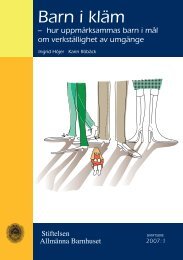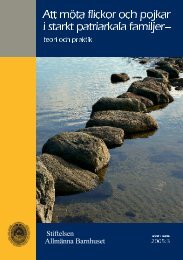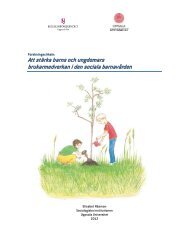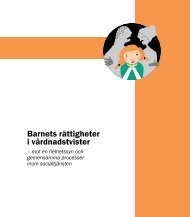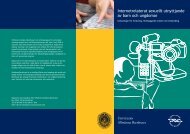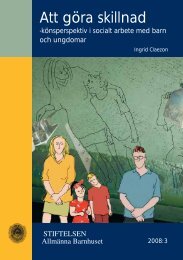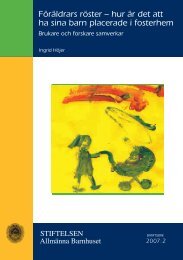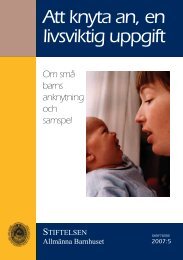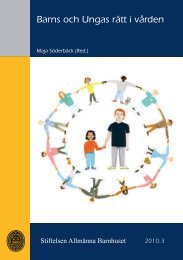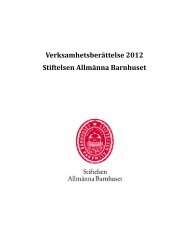Kroppslig bestraffning och annan kränkning av barn i Sverige
Kroppslig bestraffning och annan kränkning av barn i Sverige
Kroppslig bestraffning och annan kränkning av barn i Sverige
Create successful ePaper yourself
Turn your PDF publications into a flip-book with our unique Google optimized e-Paper software.
Family violence is the most dangerous risk factor<br />
for child abuse<br />
The school study draws upon the pupils’ experiences from their whole life<br />
as far back as they can remember. To a great degree the children confirm<br />
what the parents describe, but they also give a somewhat darker picture of<br />
their lives. Fourteen percent of the pupils state that they h<strong>av</strong>e been beaten<br />
any time in their life and three percent h<strong>av</strong>e been beaten several times.<br />
This share of pupils is almost exactly the same as in the studies in 2000 and<br />
2006, so there is no indication of any increase. Children born abroad, particularly<br />
boys, state that they h<strong>av</strong>e been beaten more frequently. The outstanding<br />
risk factor for corporal punishment is, however, violence between the<br />
adults in the family. This gives a ten-fold risk increase compared to families<br />
where there is no inter-adult violence. This risk decreases insignificantly<br />
when adjusted for other risk factors such as single parenthood, weak family<br />
economy or immigrant status. If parents were affected by alcohol or drugs<br />
when the conflict with the child occurred, there was a significant risk (60<br />
%) that the child was beaten.<br />
As in the former studies in 2000 and 2006, children with chronic diseases<br />
and disabilities state that they h<strong>av</strong>e been beaten twice as often as the<br />
healthy children. They also live to a greater extent in families where family<br />
violence occurs.<br />
Corporal punishment affects children’s life<br />
negatively in many ways<br />
Being beaten at home affects the child negatively in ways other than the humiliation<br />
and risk of injury. Beaten children h<strong>av</strong>e a much greater tendency<br />
to be involved in bullying than other children. They perform less well at<br />
school, h<strong>av</strong>e substantially more physical and psychological symptoms and<br />
h<strong>av</strong>e been involved in accidents more often.<br />
There h<strong>av</strong>e been speculations that Swedish parents, who no longer beat<br />
their children, instead are insulting them. The statements from the pupils<br />
point to the contrary. There is indeed a very strong connection between<br />
humiliation and corporal punishment.<br />
21



